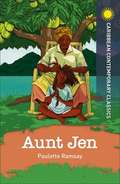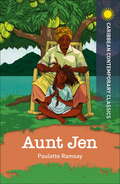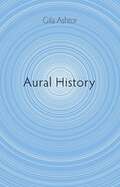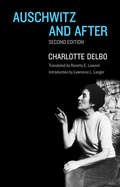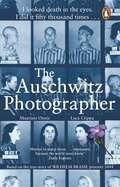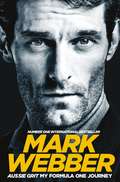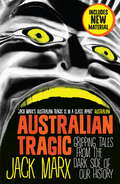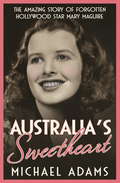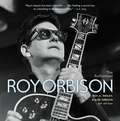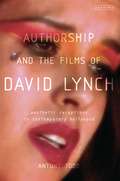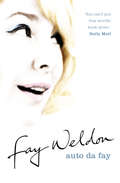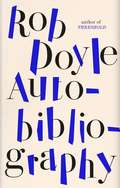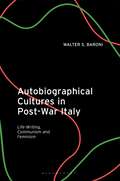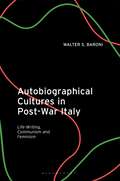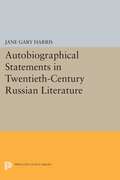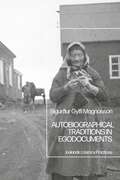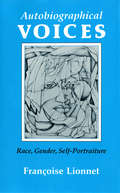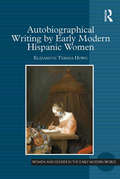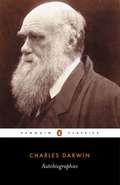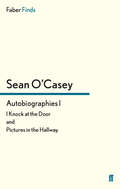- Table View
- List View
Aunt Jen (Caribbean Modern Classics)
by Ramsay RamsayWritten as a series of letters from the child Sunshine to her absent mother, Aunt Jen traces the changing attitudes of a child entering adulthood as she tries to understand the truth behind her mother's departure, and make sense of her relationship with her family. Aunt Jen migrated to England as part of the Windrush generation, and Sunshine's letters, written in the early 1970s, reveal something of the emotional as well as the physical gulf between those who left and those who remained behind. A companion novel to Letters Home, Aunt Jen is a painfully one-sided correspondence, revealing the complex inheritance we pass on to our children.
Aunt Jen (Caribbean Modern Classics)
by Ramsay RamsayThere have been many great and enduring works of literature by Caribbean authors over the last century. The Caribbean Contemporary Classics collection celebrates these deep and vibrant stories, overflowing with life and acute observations about society.Written as a series of letters from the child Sunshine to her absent mother, Aunt Jen traces the changing attitudes of a child entering adulthood as she tries to understand the truth behind her mother's departure, and make sense of her relationship with her family. Aunt Jen migrated to England as part of the Windrush generation, and Sunshine's letters, written in the early 1970s, reveal something of the emotional as well as the physical gulf between those who left and those who remained behind. A companion novel to Letters Home, Aunt Jen is a painfully one-sided correspondence, revealing the complex inheritance we pass on to our children.Suitable for readers aged 14 and above.
Aural History
by Gila AshtorAural History is an anti-memoir memoir of encountering devastating grief that uses experimental storytelling to recreate the winding, fractured path of loss and transformation.Written by a thirty-something psychotherapist and queer theorist, Aural History is structured as a sequence of three sections that each use different narrative styles to represent a distinctive stage in the protagonist’s evolving relationship to trauma. Aural History explores how a cascade of self-dissolving losses crisscrosses a girl’s coming of age.Through lyric prose, the first section follows a precocious tomboy whose fierce attachment to her father forces her, when he dies and she is twelve years old, to run the family bakery business, raise a delinquent younger brother, and take care of a destructive, volatile mother.In part two, scenes narrated in the third person illustrate a high-achieving high school student who is articulate and in control except for bouts of sudden and inchoate attractions, the first of which is to her severe and coaxing English teacher.The third story tells of her relation with a riveting, world-famous professor, interspersed with a tragic-comic series of dialogues between the protagonist and a cast of diverse psychotherapists as she, now twenty-five years old and living in New York City, undertakes an odyssey to understand why true self-knowledge remains elusive and her real feelings, choked and incomplete.In what Phillip Lopate calls “an amazing document,” Aural History pushes the narrative conventions of memoir to capture a story the genre of memoir usually struggles to tell: that you can lose yourself, and have no way to know it.
Auschwitz and After: Second Edition
by Charlotte DelboWritten by a member of the French resistance who became an important literary figure in postwar France, this moving memoir of life and death in Auschwitz and the postwar experiences of women survivors has become a key text for Holocaust studies classes. This second edition includes an updated and expanded introduction and new bibliography by Holocaust scholar Lawrence L. Langer. "Delbo’s exquisite and unflinching account of life and death under Nazi atrocity grows fiercer and richer with time. The superb new introduction by Lawrence L. Langer illuminates the subtlety and complexity of Delbo’s meditation on memory, time, culpability, and survival, in the context of what Langer calls the 'afterdeath’ of the Holocaust. Delbo’s powerful trilogy belongs on every bookshelf.”-Sara R. Horowitz, York University Winner of the 1995 American Literary Translators Association Award
The Auschwitz Photographer: Based on the true story of Wilhelm Brasse prisoner 3444
by Luca Crippa Maurizio OnnisBased on the powerful true story of Auschwitz prisoner Wilhelm Brasse, whose photographs helped to expose the atrocities of the Holocaust.'Brasse has left us with a powerful legacy in images. Because of them we can see the victims of the Holocaust as human and not statistics.' Fergal Keane_______________When Germany invaded Wilhelm Brasse's native Poland in 1939, he was asked to swear allegiance to Hitler and join the Wehrmacht. He refused. He was deported to Auschwitz concentration camp as political prisoner number 3444. A trained portrait photographer, he was ordered by the SS to record the inner workings of the camp. He began by taking identification photographs of prisoners as they entered the camp, went on to capture the criminal medical experiments of Josef Mengele, and also recorded executions. Between 1940 and 1945, Brasse took around 50,000 photographs of the horror around him. He took them because he had no choice.Eventually, Brasse's conscience wouldn't allow him to hide behind his camera. First he risked his life by joining the camp's Resistance movement, faking documents for prisoners, trying to smuggle images to the outside world to reveal what was happening. Then, when Soviet troops finally advanced on the camp to liberate it, Brasse refused SS orders to destroy his photographs. 'Because the world must know,' he said.For readers of The Librarian of Auschwitz and The Boy Who Followed His Father into Auschwitz, this powerful true story of hope and courage lies at the very centre of Holocaust history.
Aussie Grit: My Formula One Journey
by Mark WebberMark Webber was at the centre of one of the most captivating chapters in the history of Formula One. In 2010, while racing for Red Bull, he and his team mate Sebastian Vettel went head to head for the World Championship. There could only be one winner. Since retiring from Formula One Mark has concentrated on endurance racing, including the legendary Le Mans 24 Hour race. He hit the front pages of newspapers around the world in December 2014 when he slammed into the barricades in the final round of the FIA World Endurance Championship in South America, and was lucky to escape with his life. But the controversy of his relationship on and off the track with Vettel, who went on to win multiple world titles, has never been far beneath the surface. Here, for the first time, Webber tells the inside story of one of Formula One's most intriguing battles - it is a story that goes to the heart of why the sport is loved by millions of fans around the world.In his trademark straight-talking, no-nonsense style Mark reveals his amazing life on and off the Formula One race track. From his first taste of karting to his F1 debut in 2002, scoring Minardi's first points in three years at the Australian Grand Prix, through to his first win with Red Bull at the 2009 German Grand Prix and the year he should have been crowned World Champion. Mark Webber's journey to the top of Formula One was every bit as determined and committed as his racing. Aussie Grit is his searingly honest story.Includes a foreword by Formula One legend Sir Jackie Stewart.
Australian Tragic: Gripping tales from the dark side of our history
by Jack MarxA compelling collection of tales from Australia's dark heart - of catastrophe and misfortune, intrigue and passion, betrayal and tragedy.AUSTRALIAN TRAGIC ranges across our past and our present: the heartbreaking story of the fire at Luna Park; the unstoppable opportunist who snatched innocent men and women from Palm Island to be part of P. T. Barnum's 'Greatest Show on Earth'; a world-class boxer who lost his battle with alcohol and ended up in an unmarked American grave; a man who heroically survived a war to find himself crushed and defeated by events much closer to home; and a new story - of an echo from Ned Kelly at Stringybark Creek, in our own time ... Heartbreaking and shocking, gothic and weird, these fascinating stories are all true, and told to remind us of the Australia we don't know, the one that simmers with love and hate, of hopes raised and futures dashed, unheralded and unnoticed . . . until now.
Australia's Sweetheart: The amazing story of forgotten Hollywood star Mary Maguire
by Michael AdamsThis is the fascinating story of Mary Maguire, a 1930s Australian ingenue who sailed for Hollywood and a fabulous life, only to have her career cut short by scandal and tragedy. Packed with celebrity, history and gossip, AUSTRALIA'S SWEETHEART is perfect for readers of SHEILA and THE RIVIERA SET.Mary Maguire was Australia's first teenage movie star and she captivated Hollywood in the mid 1930s. Mary lived on three continents and was celebrated in Melbourne, Brisbane, Sydney, Los Angeles and London. Her life was lived in parallel with seminal incidents of the twentieth century: the Spanish Flu; the Great Depression; the Bodyline series; Australia's early radio, talkies and aviation; Hollywood's Golden Era; the British aristocracy's embrace of European fascism; London's Blitz; and post-war American culture and politics. Mary knew everyone, from Douglas Jardine, Don Bradman, Errol Flynn and Ronald Reagan, to William Randolph Hearst, Maureen O'Sullivan, Judy Garland and Queen Elizabeth II.AUSTRALIA'S SWEETHEART in an irresistible never-before-told story that captures the glamour of Hollywood and the turbulent times of the twentieth century, with a young woman at its centre. If you loved THE AMAZING MRS LIVESEY, Robert Wainwright's SHEILA and MISS MURIEL MATTERS, you will adore AUSTRALIA'S SWEETHEART.
The Authorized Roy Orbison
by Alex Orbison Roy Orbison Jr. Wesley OrbisonFor the first time, legendary performer Roy Orbison's story as one of the most beloved rock legends will be revealed through family accounts and records. Roy Orbison is a rock and roll icon almost without peer. He came of age as an artist on the venerable Sun Records label; toured with The Beatles; had massive hits in the 1960s, 1970s, and 1980s; invented the black-clad, sunglasses-wearing image of the rock star; and reinvented the art of songwriting many times over. He is a member of the Rock & Roll and Songwriters Halls of Fame, a recipient of the Musicians Hall of Fame's inaugural Iconic Riff Award, and the winner of multiple GRAMMY® awards. He is known the world over for hits like "Blue Bayou," "You Got It," and "Oh, Pretty Woman" and was a member of the band that inspired the term "supergroup"-the Traveling Wilburys, with Bob Dylan, George Harrison, Jeff Lynne, and Tom Petty. Despite these and countless other accolades, the story of Roy Orbison's life is virtually unknown to his millions of fans around the world. Now, for the first time ever, the Orbison Estate, headed by Roy's sons, Wesley, Roy Jr., and Alex Orbison, has set out to set the record straight. The Authorized Roy Orbison tells the epic tale of a West Texas boy, drawn to the guitar at age six, whose monumental global career successes were matched at nearly every turn by extraordinary personal tragedies, including the loss of his first wife in a motorcycle accident and his two oldest sons in a fire. It's a story of the intense highs and severe lows that make up the mountain range of Roy Orbison's career; one that touched four decades and ended abruptly at perhaps its highest peak, when he passed away at the age of fifty-two on December 6, 1988. Filled with hundreds of photographs, many never before seen, gathered from across the globe and uncovered from deep within the Orbison Vault, The Authorized Roy Orbison shows Roy Orbison as a young child and follows him all the way through to the peak of his stardom and up to his tragic end. Wesley, Roy Jr., and Alex Orbison-Roy's Boys-have left no stone unturned in order to illustrate the people, places, things, and events that forged their father, the man behind those famous sunglasses.
The Authorized Roy Orbison: The Authorized Biography
by Alex Orbison Roy Orbison Wesley OrbisonFor the first time, legendary performer Roy Orbison's story as one of the most beloved rock legends will be revealed through family accounts and records. p.p1 {margin: 0.0px 0.0px 0.0px 0.0px; text-indent: 36.0px; font: 12.0px Geneva} p.p2 {margin: 0.0px 0.0px 0.0px 0.0px; font: 12.0px Geneva} span.Apple-tab-span {white-space:pre} Roy Orbison is a rock and roll icon almost without peer. He came of age as an artist on the venerable Sun Records label; toured with The Beatles; had massive hits in the 1960s, 1970s, and 1980s; invented the black-clad, sunglasses-wearing image of the rock star; and reinvented the art of songwriting many times over. He is a member of the Rock & Roll and Songwriters Halls of Fame, a recipient of the Musicians Hall of Fame's inaugural Iconic Riff Award, and the winner of multiple GRAMMY® awards. He is known the world over for hits like "Blue Bayou," "You Got It," and "Oh, Pretty Woman" and was a member of the band that inspired the term "supergroup"-the Traveling Wilburys, with Bob Dylan, George Harrison, Jeff Lynne, and Tom Petty. Despite these and countless other accolades, the story of Roy Orbison's life is virtually unknown to his millions of fans around the world. Now, for the first time ever, the Orbison Estate, headed by Roy's sons, Wesley, Roy Jr., and Alex Orbison, has set out to set the record straight. The Authorized Roy Orbison tells the epic tale of a West Texas boy, drawn to the guitar at age six, whose monumental global career successes were matched at nearly every turn by extraordinary personal tragedies, including the loss of his first wife in a motorcycle accident and his two oldest sons in a fire. It's a story of the intense highs and severe lows that make up the mountain range of Roy Orbison's career; one that touched four decades and ended abruptly at perhaps its highest peak, when he passed away at the age of fifty-two on December 6, 1988. Filled with hundreds of photographs, many never before seen, gathered from across the globe and uncovered from deep within the Orbison Vault, The Authorized Roy Orbison shows Roy Orbison as a young child and follows him all the way through to the peak of his stardom and up to his tragic end. Wesley, Roy Jr., and Alex Orbison-Roy's Boys-have left no stone unturned in order to illustrate the people, places, things, and events that forged their father, the man behind those famous sunglasses.
Authorship and the Films of David Lynch: Aesthetic Receptions in Contemporary Hollywood
by Antony ToddThis fresh contribution to studies on authorship and film explores the ways in which shared and disputed opinions on aesthetic quality, originality and authorial essence have shaped receptions of David Lynch's films. It is also the first book to approach Lynch as a figure composed through language, history and text.Antony Todd traces the development of Lynch's career from cult obscurity with Eraserhead to star auteur through the release of Blue Velvet, as well as the television event of the early 1990s, Twin Peaks. He investigates how Lynch's idiosyncratic style introduced the term 'Lynchian' to the colloquial speech of new Hollywood and helped establish Lynch as the leading light among contemporary American auteurs. Through the evidence of critical and promotional ephemera and the texts carrying Lynch's name, Todd explores contemporary manners and attitudes for artistic reputation building. He also reviews the standards by which Lynch's reputation was dismantled following the release of Wild at Heart and Twin Peaks: Fire Walk with Me, only to be reassembled once more through films such as Lost Highway, Mulholland Dr. and INLAND EMPIRE.This book also ventures beyond its empirical findings by addressing authorship concerns pertaining to the ways in which, and to whom, the contemporary auteur has meaning. In its account of the experiences at play in the encounter between ephemera, text and reader, Authorship and the Films of David Lynch explores how authors function for pleasure in the modern filmgoer's everyday consumption of films.
Auto Da Fay: A Memoir
by Fay WeldonThe one and only Fay Weldon tells the story of her turbulent and controversial life.
Autobibliography
by Rob DoyleIn my case, reading has always served a dual purpose. In a positive sense, it offers sustenance, enlightenment, the bliss of fascination. In a negative sense, it is a means of withdrawal, of inhabiting a reality quarantined from one that often comes across as painful, alarming or downright distasteful. In the former sense, reading is like food; in the latter, it is like drugs or alcohol. In Autobibliography, Rob Doyle recounts a year spent rereading fifty-two books – from the Dhammapada and Marcus Aurelius, via The Tibetan Book of the Dead and La Rochefoucauld, to Robert Bolaño and Svetlana Alexievich – as well as the memories they trigger and the reverberations they create. It is a record of a year in reading, and of a lifetime of books. Provocative, intelligent and funny, it is a brilliant introduction to a personal canon by one of the most original and exciting writers around. It is a book about books, a book about reading, and a book about a writer. It is an autobibliography.
Autobiographical Cultures in Post-War Italy: Life-Writing, Communism and Feminism
by Walter S. BaroniAfter the Second World War, two contrasting political movements became increasingly active in Italy - the communist and feminist movements. In this book, Walter Baroni uses autobiographical life-writing from both movements key protagonists to shed new light on the history of these movements and more broadly the similarities and differences between political activists in post-war Italy.
Autobiographical Cultures in Post-War Italy: Life-Writing, Communism and Feminism
by Walter S. BaroniAfter the Second World War, two contrasting political movements became increasingly active in Italy - the communist and feminist movements. In this book, Walter Baroni uses autobiographical life-writing from both movements key protagonists to shed new light on the history of these movements and more broadly the similarities and differences between political activists in post-war Italy.
Autobiographical Statements in Twentieth-Century Russian Literature (PDF)
by Jane Gary HarrisThe fifteen essays in this volume explore the extraordinary range and diversity of the autobiographical mode in twentieth-century Russian literature from various critical perspectives. They will whet the appetite of readers interested in penetrating beyond the canonical texts of Russian literature. The introduction focuses on the central issues and key problems of current autobiographical theory and practice in both the West and in the Soviet Union, while each essay treats an aspect of auto-biographical praxis in the context of an individual author's work and often in dialogue with another of the included writers. Examined here are first the experimental writings of the early years of the twentieth century--Rozanov, Remizov, and Bely; second, the unique autobiographical statements of the mid-1920s through the early 1940s--Mandelstam, Pasternak, Olesha, and Zoshchenko; and finally, the diverse and vital contemporary writings of the 1960s through the 1980s as exemplified not only by creative writers but also by scholars, by Soviet citizens as well as by emigrs--Trifonov, Nadezhda Mandelstam, Lydia Ginzburg, Nabokov, Jakobson, Sinyavsky, and Limonov.Originally published in 1990.The Princeton Legacy Library uses the latest print-on-demand technology to again make available previously out-of-print books from the distinguished backlist of Princeton University Press. These editions preserve the original texts of these important books while presenting them in durable paperback and hardcover editions. The goal of the Princeton Legacy Library is to vastly increase access to the rich scholarly heritage found in the thousands of books published by Princeton University Press since its founding in 1905.
Autobiographical Traditions in Egodocuments: Icelandic Literacy Practices
by Professor Sigurður Gylfi MagnússonUsing the Icelandic context, Sigurður Gylfi Magnússon examines egodocuments as distinct and fascinating manifestations of microhistory, reflecting on their nature, the circumstances in which they originated, and their strengths and weaknesses for scholarly research.Autobiographical Traditions in Egodocuments successfully makes the case for egodocuments being an intriguing part of the material culture of their time, with ample consideration given to the role of the book within individual households and the impact a source such as autobiography has had on people's daily lives. Magnússon also provides an insightful historiographical account of how the egodocument has been used in historical works both in Iceland and elsewhere in the world since the 19th century.
Autobiographical Traditions in Egodocuments: Icelandic Literacy Practices
by Professor Sigurður Gylfi MagnússonUsing the Icelandic context, Sigurður Gylfi Magnússon examines egodocuments as distinct and fascinating manifestations of microhistory, reflecting on their nature, the circumstances in which they originated, and their strengths and weaknesses for scholarly research.Autobiographical Traditions in Egodocuments successfully makes the case for egodocuments being an intriguing part of the material culture of their time, with ample consideration given to the role of the book within individual households and the impact a source such as autobiography has had on people's daily lives. Magnússon also provides an insightful historiographical account of how the egodocument has been used in historical works both in Iceland and elsewhere in the world since the 19th century.
Autobiographical Voices: Race, Gender, Self-Portraiture (Reading Women Writing)
by Françoise LionnetAdopting a boldly innovative approach to women’s autobiographical writing, Françoise Lionnet here examines the rhetoric of self-portraiture in works by authors who are bilingual or multilingual or of mixed races or cultures. Autobiographical Voices offers incisive readings of texts by Zora Neale Hurston, Maya Angelou, Marie Cardinal, Maryse Condé, Marie-Thérèse Humbert, Augustine, and Nietzsche.
Autobiographical Writing by Early Modern Hispanic Women
by Elizabeth Teresa HoweWomen’s life writing in general has too often been ignored, dismissed, or relegated to a separate category in those few studies of the genre that include it. The present work addresses these issues and offers a countervailing argument that focuses on the contributions of women writers to the study of autobiography in Spanish during the early modern period. There are, indeed, examples of autobiographical writing by women in Spain and its New World empire, evident as early as the fourteenth-century Memorias penned by Doña Leonor López de Cordóba and continuing through the seventeenth-century Cartas of Sor Juana Inés de la Cruz. What sets these accounts apart, the author shows, are the variety of forms adopted by each woman to tell her life and the circumstances in which she adapts her narrative to satisfy the presence of male critics-whether ecclesiastic or political, actual or imagined-who would dismiss or even alter her life story. Analyzing how each of these women viewed her life and, conversely, how their contemporaries-both male and female-received and sometimes edited her account, Howe reveals the tension in the texts between telling a ’life’ and telling a ’lie’.
Autobiographical Writing by Early Modern Hispanic Women
by Elizabeth Teresa HoweWomen’s life writing in general has too often been ignored, dismissed, or relegated to a separate category in those few studies of the genre that include it. The present work addresses these issues and offers a countervailing argument that focuses on the contributions of women writers to the study of autobiography in Spanish during the early modern period. There are, indeed, examples of autobiographical writing by women in Spain and its New World empire, evident as early as the fourteenth-century Memorias penned by Doña Leonor López de Cordóba and continuing through the seventeenth-century Cartas of Sor Juana Inés de la Cruz. What sets these accounts apart, the author shows, are the variety of forms adopted by each woman to tell her life and the circumstances in which she adapts her narrative to satisfy the presence of male critics-whether ecclesiastic or political, actual or imagined-who would dismiss or even alter her life story. Analyzing how each of these women viewed her life and, conversely, how their contemporaries-both male and female-received and sometimes edited her account, Howe reveals the tension in the texts between telling a ’life’ and telling a ’lie’.
Autobiographies: Edited By His Son Francis Darwin (Mobi Classics Series)
by Charles DarwinThe Autobiographies of Charles Darwin (1809-82) provide a fascinating glimpse into the mind of one of the world's intellectual giants. They begin with engaging memories of his childhood and youth and of his burgeoning scientific curiosity and love of the natural world, which led to him joining the expedition on the Beagle. Darwin follows this with survey of his career and ends with a reckoning of his life's work. Interspersed with these recollections are fascinating portraits - from his devoted wife Emma and his talented father, both bullying and kind, to the leading figures of the Victorian scientific world he counted among his friends, including Lyell and Huxley. Honest and illuminating, these memoirs reveal a man who was isolated by his controversial beliefs and whose towering achievements were attained by a life-long passion for the discoveries of science.
Autobiographies I: I Knock at the Door and Pictures in the Hallway (Sean O'Casey autobiography #1)
by Sean O'Casey'I thought that no man liveth and dieth to himself, so I put behind what I thought and what I did the panorama of the world I lived in - the things that made me.'Sean O'Casey, 1948Sean O'Casey's six-part Autobiographies, originally published between 1939 and 1955, is an eloquently comprehensive self-portrait of an artist's life and times, unsurpassed in literature.This volume contains the first two parts: I Knock at the Door (1939) and Pictures in the Hallway (1942). The former charts the childhood of young 'John Cassidy' (as O'Casey was christened), powerfully marked by the death of his father and his affliction by the eye infection trachoma. Pictures in the Hallway carries the story into John's adolescence, and tentative steps into the adult world of work, the opposite sex and political awakening.
